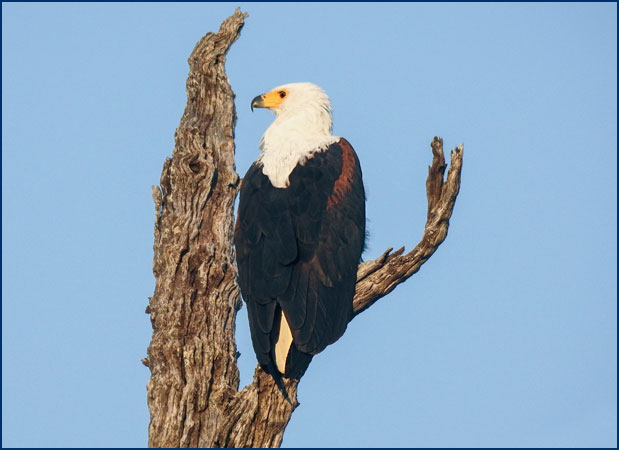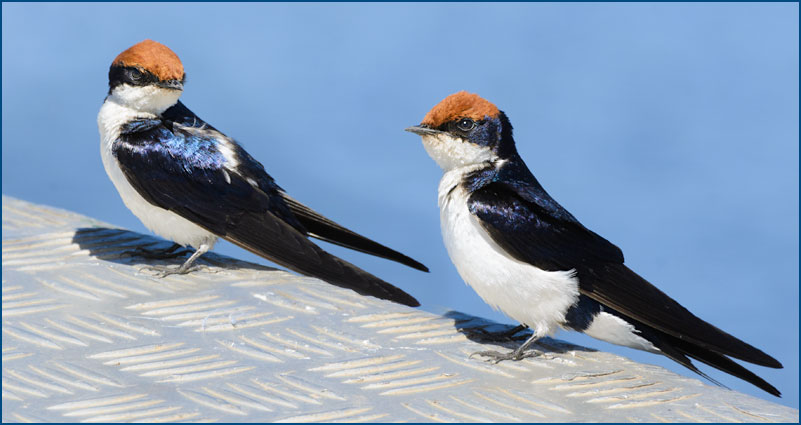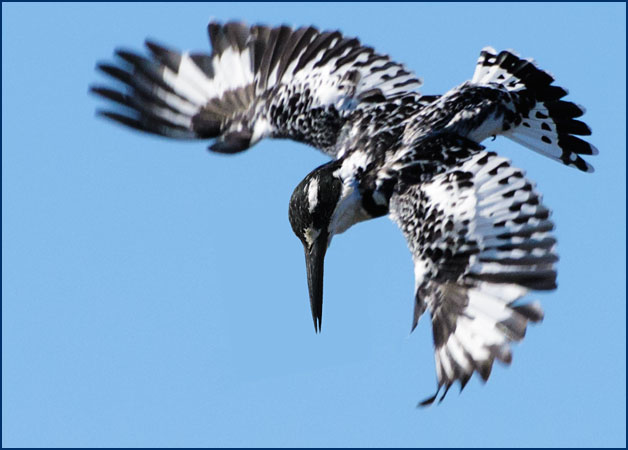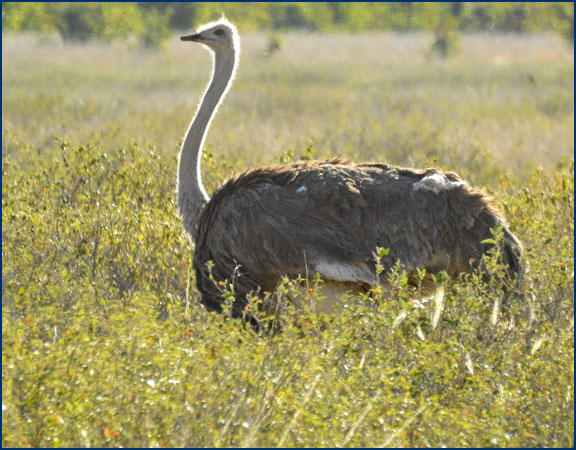|
July 27
It was my birthday! We slept in
until 6:30, and then Stan took us to the Botswana border. We
signed in, said goodbye to Stan, and went through customs and
immigration. While we stood in line we noticed a large sign posted
on the wall regarding customer service, but it was unclear whether
it was a list of the dos
or the don’ts. It read
as follows:
10
POINT AGENDA FOR
EXCELLENT CUSTOMER SERVICE
·
Adherence to
time schedules including absenteeism
·
Inconvenience
and delays in service
·
Lack of
redressal of grievances
·
Rebuke and
ridicule to complainants
·
Lack of
respect, especially to senior citizens
·
Inaction on
reported cases of negligence of officials
·
Unhelpful help
desks
·
Non
acknowledgement of receipts of letters and delays in ultimate
resolution of concerns
·
Apparently
increasing corruption in Government offices
·
Improving
overall efficiency and reducing bureaucracy
We were directed to walk through a shallow vat of
disinfectant to prevent the spread of hoof-and-mouth disease, and
then we crossed into Botswana. We transferred to a minibus which
took us to the town of Kasane. We passed many hotels and safari
companies, some rather shabby and others quite posh. We were
surprised to see a KFC, complete with Colonel Sanders pictured on
the billboard.
At the Kasane Hotel we met Gee Mange (pronounced mang-ee)
from Letaka Safaris; he was to be our guide for a private ten-day
camping trip through Chobe National Park and the Okavango Delta.
George was still not feeling well and had arranged to see a doctor
in Kasane, to make sure he was OK before heading off into the
wilderness. Rosemary and Nick stayed with him, while the rest of
us went for a cruise on the Chobe River. Gee dropped us off at the
cruise company, and while we waited on the lawn under a flowering
tree Sally scored three new kinds of birds.
Our cruise guide took us
down to a pier at the edge of the river, where we boarded a little
motor boat. We seemed to be
given a smaller boat each time we went out on the water! As we
headed up the broad Chobe River our guide was able to maneuver
close to the shores. A giant kingfisher flew along the shore - he
was much larger than the other types we had seen. An anhinga
perched on a branch, holding his large wings outstretched to dry
his glossy feathers. A small baby crocodile was well-camouflaged
as he lay stretched out on a tree root. A fish eagle sat in a
treetop surveying the river, his white head and shoulders shining
in the sun.
|

Fish Eagle |
There were hippos up on the shore, and more in the water.
Our guide pointed out an antelope we had not seen before,
the red lechwe; they live near the water and run into the shallows
to avoid predators. We also saw impala, waterbuck and baboons. A
man stood in a flat canoe, poling it through the shallow water
near the shore. Several huge crocodiles were sleeping beside the
river, and we passed so close to one we could almost have reached
out and touched him (but we didn’t). We marveled at his sinister
jaws and rows of jagged teeth close-up.
A large herd of African buffalo were grazing on the
floodplain, some of them quite near the water. Marabou storks, the
ugliest of all birds, meandered among the buffalo. A large
hippopotamus lay sound asleep in the grass just a few feet from
the river’s edge. When we got close he opened one eye a crack
and glared at us, then closed it and resumed his slumbers.
The buffalo moved closer, and some of them came right to
the edge of the riverbank. Our little boat floated within feet of
them, and we were about at the level of their knees. They stared
down at us myopically, snorting, their ragged ears outstretched
and nostrils flaring. We gazed up at them in awe; it was amazing
to be so close to these massive creatures.
A pair of wire-tailed swallows circled around us - our guide said
they wanted a ride on the boat. I didn’t take him seriously, but
sure enough a few minutes later the swallows landed on the front
of the boat, perching less than three feet from where I was
sitting. They seemed to enjoy the ride!
|

Wire-tailed
Swallows
|
As we motored along suddenly the boat lurched; an angry
hippo had bumped it hard, warning us we were encroaching in his
territory. His head popped up out of the water in our wake, and he
seemed to be rebuking us for coming too close.
A herd of elephants filed down to
the left bank of the river, ambling past impala, water bucks and
baboons. The elephants were quite a distance from us as they lined
up along the shore to drink; I was really sorry that we couldn't
approach them closer, but the tour was required to follow a set
route.
We floated past low islands inhabited by Egyptian geese,
white-faced ducks, egrets and several types of storks and ibis. A
goliath heron caught a fish by spearing it with his beak, and we
watched as he struggled to swallow it. When other birds approached
he flew away with his dinner to avoid competition. A thatched
gazebo sat on a floating deck mid-stream; our guide said it was a
bar. The fish eagle had left the tree and was now soaring above,
looking down from his place on the wind.
A pied kingfisher shot by, and
then returned to hang in the air just a couple of yards from the
boat, posing for us as he flew in place. It was amazing to watch
these agile birds in action; they hover above the water, hanging
motionless in a whir of wings while looking for fish. Then with
folded wings they dive straight down into the water, usually
emerging with a tiny fish in their beak. We couldn’t believe our
luck at getting such a close look at one of these amazing birds.
|

Pied Kingfisher |
Back on shore we reunited with Gee and the rest of our
group. Fortunately the doctor had found George to be on the mend
so all was well. We climbed into the Toyota land cruiser that
would be an integral part of our lives for the next ten days.
There was an aluminum ‘Letaka
Safaris’ water
bottle for each of us set in the metal cupholders mounted on the
sides of the vehicle, and our luggage was in a small trailer
attached to the back. Our Letaka safari was arranged so that we
would spend three nights at each of three different camps. We set
out for Savuti, in Chobe National Park.
We followed a paved road and soon
came to the gate to enter Chobe. The countryside was forests and
meadows, and the trees were rich with autumn-like colors. An
elegant giraffe stood close to the road. We passed elephants,
another giraffe, and then more elephants. Suddenly a beautiful
black antelope dashed across the road in front of us – Gee said
it was a sable, very rare, and only likely to be seen right in
that area.
Before long the road crossed back
out of the game reserve and through farmlands. We could see zebras
out in the pastures grazing with the cattle. Gee had brought box
lunches, which we ate on a picnic table under the shade of a
magnificent ancient baobab tree. With their huge trunks and small
stunted branches, these remarkable trees are the quintessential
symbol of Africa.
Soon the road to
Savuti narrowed and turned to sand, and led back into the game
reserve. And note that both for this and our entire mobile safari,
I use the term ‘road’ loosely. Two adjacent tire tracks in the
sand would be a more accurate description.
The further we went, the deeper
the dry sand became. Before long Gee was shifting the land cruiser
into four-wheel low and plowing through the heavy sand with the
engine racing. We noticed the land cruiser was equipped with a
snorkel, which seemed incongruous in the arid sandy environment,
but no doubt it might come in handy later. When Gee stopped for a
short break most of us took turns going behind some bushes for
nature’s call. Mary said she would wait until we came to a rest
room; uh-oh, I thought . . . she may be in for a shock . . .
We continued on and on for hours, grinding our way through
the deep sand on the narrow track through the dense mopane-veldt.
Periodically there were pockets of sand so deep that multiple
tracks had been made through it, presumably to avoid where the
previous vehicle had been stuck. Once we passed a small truck
coming the other way, and several times we had to stop to let
elephants or giraffes cross the road in front of us. The deeper we
went into Chobe the tougher the going was. The land cruiser
lurched like a roller coaster gone amuck, and we were thrown from
side to side. Jineen and Nick, in the farthest back seat, were
being tossed against the roof. (Gee told us later that the guides
refer to the far back seat as the kangaroo seat.) And the amazing
thing was that this was the main highway from Kasane to
Savuti!
We came upon a little blue pickup
truck with a mattress and pop-up tent strapped on the roof,
occupied by a young couple from The Netherlands. They were sitting
at a fork in the road looking lost – their GPS told them to turn
right, but Gee told them to go left and follow us. We knew we
wouldn’t want to be driving these roads without a guide!
|

Female Ostrich |
A zebra stood near the road, and we saw an ostrich in the
distance, making its way through the brush. A mongoose darted into
the bushes, and we spotted a ground hornbill and a kori bustard.
We came to a spot where the road widened and the sand was
especially deep. Gee went around this treacherous spot by driving
through the brush, but we looked back and saw the Dutch couple try
to go straight through the deep sand - they promptly got stuck.
Gee stopped, looking doubtful, and asked us what we wanted to do
– of course we agreed to stop and help them. Gee produced a
shovel and dug out the front tire, and we all got behind the
vehicle and pushed it out of the sand. Our good deed for the day!
We arrived at our camp in Savuti at six o’clock, almost
ten hours after leaving Kasane. The setting sun painted the sky in
brilliant shades of orange, red and magenta, fading to deep blue.
We were greeted by Open, one of our camp staff, with glasses of
iced tea on a tray. We also met the rest of the staff; our chef
Mosa, and KP, who did whatever needed doing around camp. They had
come ahead in another vehicle with all of the equipment, and had
the camp set up and ready for us.
Our tents were placed along a dry riverbed. Each had two
narrow bunks with comforters and heavy blankets, and two tiny
bedside tables. They had canvas floors and zip-down windows with
screens. At the back of the tent was a canvas-walled bathroom
stall, open to the sky, with a bucket shower and a toilet set over
a deep hole in the ground. The toilet seat had a canvas cover, and
a bucket of ashes for ‘flushing’ was on hand, complete with a
little shovel. Towels and toilet paper were provided; we made sure
to keep the TP inside the tent so the monkeys wouldn’t get it.
There was a little covered verandah on the front of each tent,
with two canvas washbasins, supplied with warm water to wash up
for dinner. There were two chairs there during the day; they were
moved to the campfire in the evenings. After dark, lanterns glowed
in front of the tents.
The dining table was under an
open-sided tent. A campfire burned nearby; Gee collected elephant
dung to use as kindling to get it started. Open served us drinks
while we sat around the fire; there was an ample supply of wine
and gin-and-tonics. After a while Mosa came and shyly announced
dinner, looking down and scuffling his feet while he told us what
each course would be. The food was excellent; Mosa had done an
outstanding job. Our group surprised me with a birthday cake,
candles and all, which had somehow survived the bumpy ride all the
way from Kasane. Things don’t get any better than this.
After
dinner we sat around the campfire talking with Gee. A sudden noise
like a gunshot split the night; Gee explained it was an elephant
breaking a tree. The night was crystal clear - we could see the
stars, but the light from the half-moon diminished the brightness
of the southern constellations.
It was quite cold by the time Jineen and I went back to the
tent, so I was delighted to find a hot water bottle in my bed. We
heard the soft whoo-oop,
whoo-oop of hyenas
calling in the night, sometimes near and sometimes far. An
elephant trumpeted once. I
was cold during the night; for some reason I couldn’t seem to
get warm despite the thick blankets on the bed. Shivering, I put
on extra layers of clothing and cuddled the hot water bottle to me
like a teddy bear, wishing I had borrowed one of the heavy
blankets from the land cruiser.
July
28
We heard Open quietly calling good
morning outside our tent at 6:00 a.m. - our wakeup call. Warm
water was waiting for us in our washbasins. The morning was crisp
and cold, probably in the mid-forties. Still cold from the night,
I put on most all of my clothes for the game drive. I wore sweat
pants over my long-johns, and my jeans over that. I layered on
short-sleeved shirt, long-sleeved shirt, sweater, light jacket,
photo vest, and finally my coat. Soon I was quite toasty.
We gathered around the fire for
hot tea and coffee. Breakfast was served at 6:30; hot porridge,
and toast with jam and honey. (The butter was hard as a rock from
the cold.) We set out on the morning game drive at seven.
The land cruiser had three rows of
seats, as well as the ‘shotgun’ position next to the driver.
The front row had two seats with a console in between, three
people sat in the middle row, and two back in the kangaroo seat,
which took a bit of climbing to get in and out of. Gee usually
tried to stop with the left side of the vehicle toward the animals
we were viewing. Throughout the trip we rotated who sat where. We
took the canvas top off the cruiser for better visibility, and Gee
folded down the windscreen. A cooler of drinks sat on the console
on the front tier of seats, and there was a power strip for
charging camera batteries. There were thick wool blankets for each
of us.
We started out along the river; it was merely a small
stream trickling from pool to pool, but no doubt a strong
watercourse during the rainy season. A fish eagle watched us from
a tree, and a flock of white pelicans stood by the edge of the
water.
|

Great White Pelicans |
Heading out across the plain we saw warthogs, wildebeest and
elephants. A male ostrich strolled through the bush, his brilliant
black and white plumage unmistakable even from a distance. At
first we wrapped up in the blankets for warmth, but as the sun got
higher we were soon shedding layers.
Gee
heard a radio report from another guide that lions had been seen
moving our way. He drove to a sandy spot on the plain where
several tracks converged, and stopped to wait.
‘It is better if we let the lions come to us,’ he told
us. Several other vehicles joined us. It was very quiet as we
scanned the empty plain. Would they come?
|